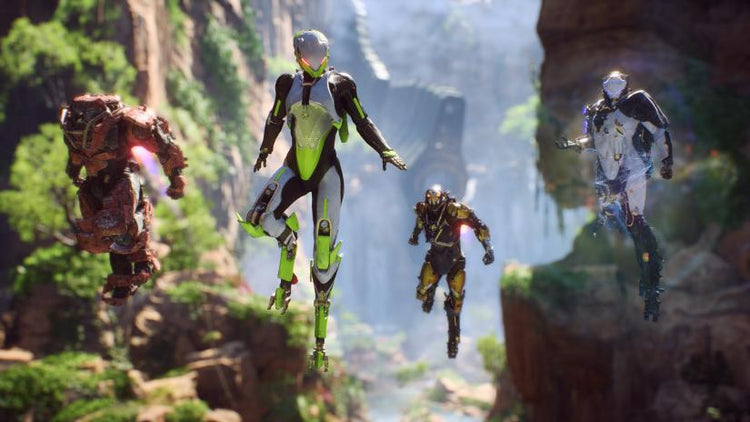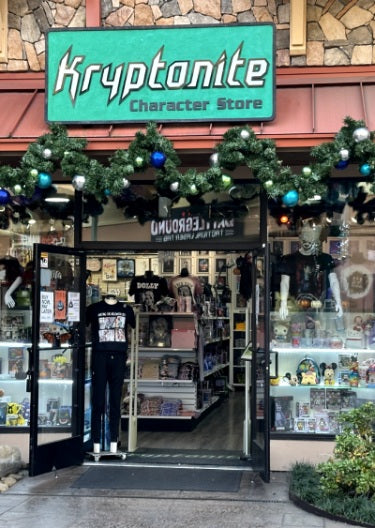Anthem is the latest offering from legendary RPG studio BioWare. Was it worth the wait? Our review...
Release Date: February 15, 2019
Platform: PC (reviewed), PS4, XBO
Developer: BioWare
Publisher: Electronic Arts
Genre: Loot Shooter
Anthem is one of the riskiest projects a major games studio has undertaken in recent memory, with BioWare offering a gaming experience radically different than the beloved narrative-driven action RPGs that have garnered the studio great success and adoration over the past fifteen years. An action-forward loot shooter in which storytelling plays a secondary role isn’t exactly what fans expected or wanted from BioWare, but nevertheless, that’s what we’ve been given.
Mismanaged expectations will likely be Anthem’s greatest detriment for Mass Effect and Dragon Age evangelists expecting a space/fantasy opera of the latter titles’ ilk, but I’m choosing to divorce myself from those comparisons for the majority of this review to give Anthem its day in court and judge it on its own merits.
With that out of the way, the game is an absolute blast to play when you’re jet-packing around the massive map in your personalized Javelin (mech suit) and laying waste to enemies from above and below with guns, grenades, and all sorts of neat looking special abilities, especially when you’ve got three suited-up online allies helping rain down hellfire alongside you. The visuals are super pretty, too, with detailed environments and character models scaffolded by brilliant art design. The storytelling and dialogue, while only minimally interactive, actually unfold quite nicely as long as you aren’t expecting anything intergalactically epic or interpersonally intricate.
Anthem gets all of these basic elements right, which bodes well for the future of the franchise since the loot shooter format is inherently adaptable over time. But the devil, as they say, is in the details, and boy oh boy, in its current form, this game has a list of nagging issues so extensive that all of its strengths, which are actually quite strong, are persistently undermined, making for a rickety, unpolished, and at times, intensely irritating experience.
Before delving into the game’s weaknesses, it’s worth reiterating that, from a pure gameplay standpoint, Anthem is fantastic. Combat and traversal are so good, in fact, that I keep finding myself drawn back to the game despite the bugs and imbalances that mar each and every playthrough. Destiny comparisons are totally fair on a macro level, but once you pick up the controller and start soaring around in your Javelin, it’s readily apparent that the two games have a completely different feel.
You play as a freelancer, a sort of adventurer and protector who defends the colony Fort Tarsis, the game's hub area, from the dangerous hordes that lurk outside the city’s gigantic walls in the larger world of Bastion. When out on a mission, you’re generally alternating between traversing the environment and engaging in combat.
Flying around in your Javelin is exhilarating and doesn’t really get old thanks to how eye-popping and geographically-varied the terrain is. Enough can’t be said about the game’s verticality, which is so staggering that it actually feels jarring and unnatural the first time you dive straight down into a canyon to cool off your boosters -- a clever mechanic that forces you to use the environments’ verticality strategically.
The freedom of motion flight affords you is maybe even more enjoyable while in combat. Aerial tactical options are available to you at all times and truly breathe life into what would otherwise be generic firefights. Taking too much damage? Fly up to the cap of that gigantic mushroom and hang out until your shields replenish. A hulking brute with a ginormous shield and a flamethrower has you pinned down? Hover twenty feet above him and circle to his back, where his fuel tanks are exposed and begging for bullets. Free flight hasn’t been pulled off this smoothly in any action game I can remember—flying simply feels really good, and the enormous scale of the environments makes you feel like you’re in a heavy piece of machinery hurtling around hundreds of feet above the ground rather than a weightless mass of polygons floating through a digital space, a sensation that creates a subtle air of danger and precariousness I liked quite a bit.
There are four types of Javelins to choose from, each with three ability slots, two weapon slots, and six stat-altering component slots to customize and upgrade. There’s the lightning-fast, melee heavy Interceptor; the well-rounded Ranger; the lumbering, destructive Colossus; and the battlefield-manipulating, elemental-based Storm. I used the Interceptor most because I loved the sensation of diving into a cluster of enemies and slicing them up with my tornado-like melee attacks. But each Javelin feels different and requires you to adapt to a different style of play, which deepens gameplay in the long run. When I went from the Interceptor to the Colossus, for instance, I was no longer able to dart around and melee everyone to shreds, so I had to adapt to using my giant shield and acting as a more supportive, ranged teammate, launching rockets into groups of enemies from afar. I thoroughly enjoyed falling into each Javelin’s unique rhythm.
Perhaps the most uninspired aspect of the entire game is the mind-numbingly generic loot, which is obviously a big problem for a game largely driven by, well, collecting loot. The guns have forgettable names like “Fulcrum” and “Scattershot” and “Anvil,” and most of the rarer items you pick up are just higher-level versions of the same old guns. And don’t get me started on the in-menu artwork for the guns—atrocious, brown blobs that all look the freaking same. What’s worse is that you collect dozens and dozens of the same gun as you progress, which means you’re constantly scrapping duplicates and underpowered items at the end of missions. The first Mass Effect had the same exact issue, and I’m puzzled as to why BioWare has fallen into this trap again.
Abilities are more interesting. A lot of them are element-based, which inflicts elemental status effects and sets enemies up for combos—once an enemy is set up using a “primer” ability, another teammate can finish them off with a “detonator” attack, a surprisingly fun system that adds to the flow of combat.
Unfortunately, when you realize how repetitive the mission structures are, the game starts to feel a lot less inspired. Each mission sees you either defending hold points, searching for downed NPCs, or simply clearing an area of baddies, and while dialogue between characters provides context, it’s always painfully obvious that you’re carrying out essentially the same operations you did in the last five missions. If the gameplay wasn’t so darn good, the monotony of the missions would be a deal breaker.
The biggest issue with the missions, though, has to do with connectivity during online play. In almost every story mission I launched, I was dropped into an already-in-progress mission, which meant that I'd missed a huge section of story-driving dialogue. This was maybe my biggest annoyance with the game because I actually enjoyed the main story but missed chunks of exposition, character development, and who knows what else because the game decided to drop me in the middle of a mission that was already halfway completed. On top of all that, when you’re dropped into an in-progress mission, you spawn at the mission’s starting point, which puts you miles away from the other players. A countdown promptly appears telling you to hurry up and join the other players, which is often impossible because they’re so far ahead of you. When the countdown runs out, you’re teleported to the other players’ position. Why wouldn’t I just spawn alongside the other players in the first place and avoid this whole countdown nonsense? I’ve got no clue, but it’s a big waste of time.
I experienced other technical issues too, like mission objectives failing to trigger (effectively forcing all players to quit and restart), enemies vanishing into thin air and then reappearing randomly, and insanely long loading screens that were comfortably long enough to take a bathroom break during (the launch day patch has shortened the loading times a bit, which actually helps a lot). I have no doubt many of these issues will be ironed out in the coming weeks, but from what I played, these hiccups were simply impossible to ignore.
One aspect of Anthem that I suspect won’t receive a lot of attention is the narrative, but after finishing the campaign, I have to say the main story is pretty compelling. The world-building, plot-based stuff revolves around The Anthem, a powerful, ubiquitous energy that controls everything, and the Freelancers tussling with an evil faction called The Dominion over ancient relics that could possibly harness the power of The Anthem itself and end the world. It’s kinda-sorta generic sci-fi stuff that’s adequate and inoffensive.
But the character work, particularly concerning the main four characters, I found to be much more captivating. There’s your Freelancer, of course, and then there’s the stubborn, hard-nosed ex-Freelancer, Haluk; the kind-hearted, gifted Cypher (a Freelancer’s in-ear partner) Faye; and the charming, chattery Owen, your Freelancer’s Cypher. The voice acting is superb, and the four characters go through a lot throughout the story. Plus, there’s a big twist later in the campaign that totally changes the group dynamic and actually moved me emotionally, which was impressive and pleasantly surprising.
BioWare’s facial and performance capture technology has improved by leaps and bounds, which was quite necessary since half of the game is spent in first-person in Fort Tarsis, where you interact with all of the game’s NPCs. While the main characters are memorable and feel well-developed, the rest of the NPCs scattered about Fort Tarsis are a mixed bag, with some becoming so irritating over time I began to avoid talking to them completely. There’s an old lady who lost her son years ago and starts imagining that you’re him, a storyline that I think is meant to be sad and tragic but doesn’t hit home because the writing is so stilted and the conversation (as with most conversations in Fort Tarsis) doesn’t actually affect the main game beyond the self-contained exchange.
After you complete the campaign, you unlock two dungeon-like Strongholds and three Grandmaster difficulty levels. These unlocks give the game some extra life, but Grandmaster mode mostly just feels frustrating as hell since enemies become bullet sponges and can sometimes obliterate you with one hit. The Strongholds are fun to tackle with a squad of friends since they encourage you to expand your tactical abilities, despite the fact that one of them is just a replay of the final story mission.
Overall, the post-ending content feels anemic. BioWare has laid out a 90-day road map for additional content to come, so I suppose we’ll see if any of any of these planned additions make an impact and entice players to stick around.
Anthem’s combat and traversal are its bread and butter, and the fact that BioWare nailed those two cornerstones of gameplay on the first pass is a great thing. The fact that I want to continue playing the game post-review is a testament to the strength of the core gameplay, but BioWare’s got a long road ahead before the studio can fully resolve the shooter’s myriad issues and count it as one of the top-tier titles in its catalog.
By Bernard Boo
Source: https://www.denofgeek.com/us/games/bioware/279483/anthem-review


